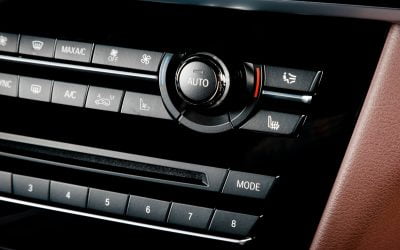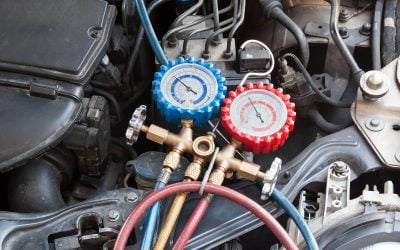My check engine light is on, what do I do?
My check engine light is on, what do I do?
If you’re driving your car and the check engine light suddenly pops up, it can be a bit of a scary experience. Your check engine light is an indicator that something is wrong with your car’s engine or emission control system, and it is important to address the issue as soon as possible.
What should you do when your check engine light comes on?
If your check engine light (commonly abbreviated and referred to as the CEL) comes on while you’re driving, it’s important to take action. However, you may be wondering if you need to pull over and have your car towed to a mechanic right away. The answer is: it depends.
If the check engine light comes on and you notice a sudden change in your vehicle’s performance (such as loss of power or rough idling) or the check engine light is orange, red or flashing instead of static yellow, it’s best to pull over as soon as possible and have your vehicle towed to a local mechanic. This indicates there may be a serious issue with your vehicle and continuing to drive could quickly cause serious and expensive damage.
On the other hand, if the check engine light comes on but you don’t notice any significant changes in your vehicle’s performance, we recommend you pull over as soon as possible and see if there is an obvious issue with the car that you can diagnose and fix yourself. If you’re not able to find a problem, you should be okay to drive your vehicle (with extra care) to your nearest mechanic and have it looked at without any issues. We don’t recommend driving around with the check engine light on for longer than you have to, as ignoring the check engine light could lead to more costly repairs down the road.
What to do if your car displays a “Check Engine” light while on the road:
Pull over and turn off the engine
When it is safe to do so, pull onto the side of the road and turn off the car’s engine. Make sure you are not in danger of being in an accident or getting hurt. If the check engine light is orange, red or flashing (instead of a static yellow), this indicates a serious problem with the car. You should not continue driving and should have your vehicle towed to a trusted mechanic.
Check for any obvious problems
If the check engine light is a solid yellow, check for any visible issues like a loose petrol cap or signs of a faulty battery. If you can fix the problem right then and there, that’s great. If not, you can determine whether or not the problem is one that will still allow your car to be driven to a mechanic for them to fix for you or if you should have it towed.
Feel and listen to your vehicle
If you’re not sure what the problem is with your car, it’s important to take it to a mechanic as soon as you can. If your car’s performance doesn’t seem to be affected with issues like a loss of power, increased fuel consumption, a strange/new noise, vibration, clunking, grating etc. – it should be okay to continue driving your car with extra care to a mechanic.
Don’t ignore the light
While it may be tempting to ignore the check engine light, it is not advisable to do so. If not fixed by a qualified mechanic, the problem could get worse over time and cause more damage to your engine. This could potentially turn a relatively cheap and easily solved problem into an expensive one.
What could be the cause of the check engine light?
There are a wide range of issues that can cause an engine light, from a loose petrol cap to a hard to track down wiring issue. Some common reasons why the check engine light may come on include:
Loose or Damaged Petrol Cap
Your petrol cap is an important part of your fuel system that helps to maintain the pressure in your petrol tank. If your petrol cap is loose or damaged, it can cause the pressure to drop, which can trigger your “Check Engine” light. Thankfully, this is an easy fix – just make sure your petrol cap is tightened securely or replace it if necessary.
Oxygen Sensor Failure
The oxygen sensor in your car measures the amount of unburned oxygen in your exhaust system. If it detects too much or too little oxygen, it can cause your “Check Engine” light to come on. This is a common issue that can lead to decreased fuel efficiency or eventually engine damage, so it’s important to address it as soon as possible.
Malfunctioning Catalytic Converter
The catalytic converter is responsible for reducing the emissions produced by your car. If it’s not working properly, it can cause your “Check Engine” light to come on. This can impact the performance of your car and have negative impacts on the environment around you, so it’s important to have it inspected and repaired as soon as possible.
Old or Malfunctioning Spark Plugs and/or Ignition Coils
Spark plugs and ignition coils are responsible for creating the spark that ignites your fuel mixture. If they start to fail or if your spark plugs need replacing, it can cause misfires in your engine and trigger your “Check Engine” light. This issue can lead to decreased fuel efficiency and even damage to your engine if left unchecked, so it’s important to have it addressed quickly.
Faulty Mass Airflow Sensor
The mass airflow sensor measures the amount of air entering your engine and helps to ensure that the correct amount of fuel is delivered. If it’s not working properly, it can cause issues with your air:fuel ratio and trigger your “Check Engine” light. This can lead to decreased fuel efficiency and performance issues, so it’s important to address it quickly.

Is it okay to drive with the oil light on?
We strongly suggest that you don’t drive with the oil light on. The oil light is one of the most important warning lights on your vehicle’s dashboard and should not be ignored. When it comes on, it’s indicating that there is a problem with the engine’s oil system such as low oil levels or low oil pressure. If you see the oil light come on, the first thing you should do is to check your engine’s oil level. If the oil level is low, top up the oil to temporarily fix the issue and have your car taken to a mechanic as soon as possible. You may be overdue for a service or have a serious oil leak. If you’re not able to check your car’s oil level (e.g. you own a newer vehicle without a dipstick), we highly recommend having it towed to a qualified mechanic for inspection. You can refer to your owner’s manual for guidance on the type and amount of oil your vehicle requires.
If your oil level is fine but the oil light is still illuminated, it could be a sign of a more serious problem with your engine’s oil system, such as a broken oil pump or a clogged oil filter. In this case, it’s important not to start or drive your vehicle and have it towed to a qualified mechanic for diagnosis and repair. Oil is the lifeblood of your car: It keeps your engine clean, helps to manage engine temperature and lubricates all of the metal components in your engine that are revolving thousands of times a minute. If you drive your engine without its oil system in good order, it can very quickly lead to catastrophic engine failure, so it’s important to take this warning seriously. Regular maintenance, including oil changes and filter replacements, can help prevent oil-related problems and keep your engine running smoothly.
Need your check engine light fixed?
There are a wide range of problems that can cause your check engine light to turn on – so if it’s not apparent what the problem is, Australian Mechanical can investigate, diagnose and repair the problem before your car engine is damaged. To book your car in and fix your check engine light, give us a call on 07 3356 1538 today.
Read More Posts
How We Test Your Car Air Conditioning For Leaks
We use environmentally friendly leak detection methods to find & fix air conditioning leaks.
How To Tell if Your Car Aircon Needs a Regas
Is your car’s air conditioner not as cold as it used to be? Learn how to tell if your car aircon needs a regas.
$99 Car Servicing, Is It Saving You Money?
The $99 Car Service can sound like an incredibly good deal, but is it actually saving you money in the long run?
Call us on 07 3356 1538
Book your next service or repair today and experience our honest, knowledgeable and friendly service.



